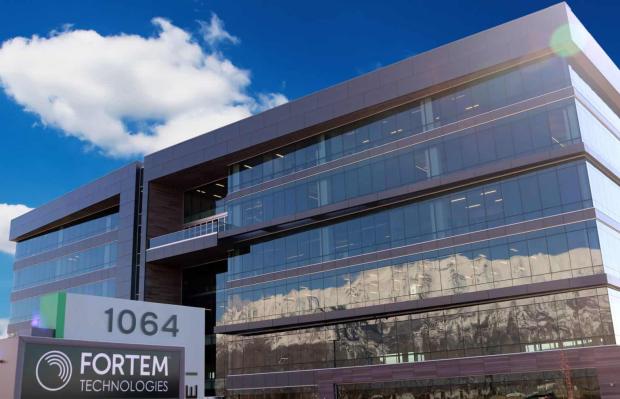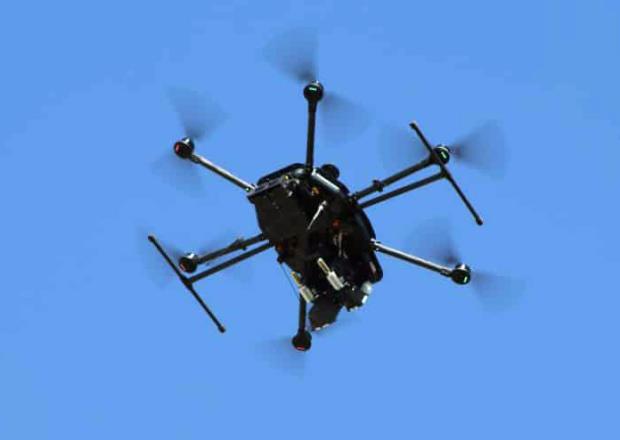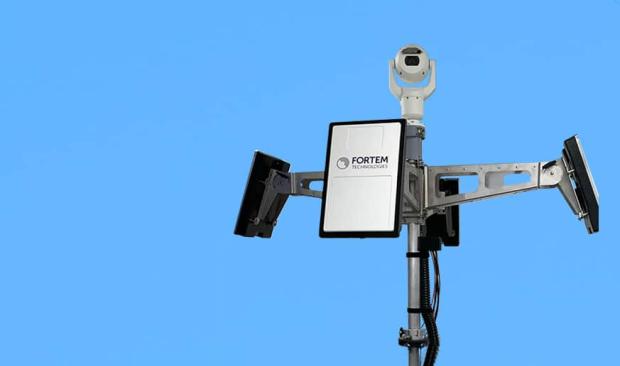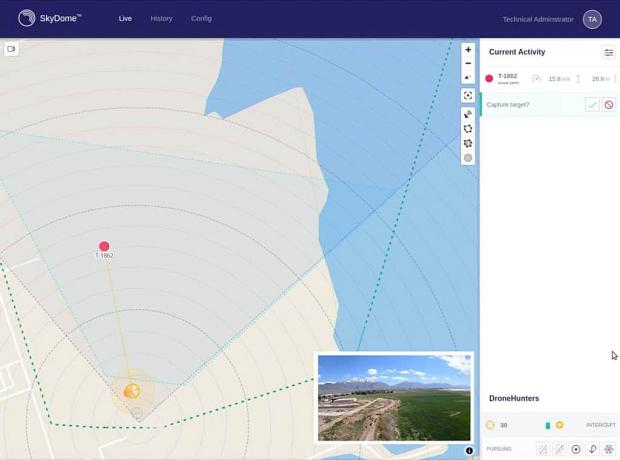Fortem Technologies Q&A on Drones and C-UAS!




Fortem Technologies, a technology leader in C-UAS, caught our eye at the recent AUVSI Xponential conference. NREF is pleased to bring you this exclusive interview with Fortem on its pioneering, state-of-the-art C-UAS solutions.
NREF.ORG Q&A
Fortem Technologies
● Could you provide some background on Fortem as a company?
○ Fortem Technologies is the leader in airspace awareness, security, and defense for detecting and defeating dangerous drones. Through an advanced, end to end system of distributed radar, AI at the Edge, deep sensor integration, and autonomous drone capture, Fortem monitors and defends the world’s venues, infrastructures, cities, and regions. The same system is accelerating the safety of the world’s airspace for urban air mobility. Based in Pleasant Grove, Utah, the company is privately held and backed by Toshiba, Boeing, DCVC, Mubadala Investment Company, Signia Venture Partners and others.
● What is the scope of the drone threat to civilian populations and commercial institutions?
○ Overall, the threat is considered fairly high. Anyone can purchase a consumer drone online, attach a bomb or weapon to it, and wreak havoc. This threat is only growing as drones become more and more popular and accessible.
● In what commercial sectors does Fortem utilize its technology?
○ Energy, Oil & Gas, Communications (telecom), Events/Stadium Security
● What kinds of commercial/civilian venues are being protected by Fortem?
○ Fortem provides its technology to an array of companies including airports, sports arenas, military partners, US government labs, wireless carriers, and more.
● Is Fortem supporting the military with C-UAS?
○ Yes.
● Is Fortem using hybrid propulsion and/or new battery technology in its drones?
○ Fortem uses lithium ion batteries (not hybrid propulsion).
● What role does machine learning and/or AI play in Fortem’s C-UAS technology?
○ Fortem’s SkyDome® Manager is adaptable AI software that fuses TrueView® radar and other sensor inputs to monitor any environment autonomously in 3D. By assessing and detecting airborne threats, SkyDome Manager is able to anticipate vulnerabilities, alert personnel, or launch DroneHunter® to neutralize dangerous or malicious drones.
● What is the roundtrip distance reach and sortie duration in current applications for Fortem drones?
○ Sortie duration is about 20- 30 minutes, generally longer than the duration of the offending drone’s own battery life.
● What is the current state of counter-drone protocols?
○ Right now, the FAA has all rights to mitigating C-UAS. State and local police are not able to legally mitigate rogue drones that are flying in no-fly zones such as around highly populated cities, airports, and critical infrastructures. The FAA has said only Federal agents can stop a drone, yet at the same time, the FBI is unfunded in its ability to buy tools to stop drones.
● What does Fortem offer in terms of counter-drone technology?
○ The Fortem SkyDome System monitors, detects, assesses, and mitigates drone threats, including RF-silent dark drones. Effective in adverse weather conditions, day or night, the SkyDome System can be configured in many ways and scales to protect any zone, building, corridor, border, event, customer infrastructure or even an entire metro region. Designed from the ground up, The SkyDome System is made to complement and integrate seamlessly with other command and control systems with its flexible API. Fortem radar is designed to be the foundation of a multi-layered sensor approach to C-UAS. Fortem’s TrueView® radar, DroneHunter®, and SkyDome® Manager Software are three high-performance, core products integral to this system. The DroneHunter’s deep integration with TrueView radar allows for an autonomous detect, pursuit, and capture of rogue drones. With safety built into its core, the DroneHunter captures and tows away these malicious or dangerous drones with no collateral damage.
● With respect to C-UAS, what is Fortem’s position/opinion with respect to:
○ Kinetic
■ Fortem DroneHunter is the category leader for kinetic, non-lethal C-UAS in defending against low flying drones and in protecting cities, critical infrastructure, military bases, borders, and coastal areas from drones that attempt to pass undetected by traditional ground-to-air defenses.
○ Directed energy
■ Directed Energy has a place in the counter drone mix. There are instances where DE can be useful in mitigation - however where a no/low collateral damage result is a requirement it must be considered.
○ RF jamming
■ Anyone can go into a store and purchase an off-the-shelf drone for as little as $50 and turn it into a “dark” drone, or one that does not emit an RF signal, in a matter of minutes. Because of this, RF jamming technology is inadequate and will not prevent dangerous attacks caused by dark drones.
■ RF jamming also causes disruption of other critical communications signals and can bring down other communications networks, etc.
○ Microwave counter-drone technologies
■ There is a place for microwave technologies - but it would be considered as a part of a solution, not a complete solution
○ Seize and retrieve systems for forensic analysis
■ Seizing and retrieving systems for forensic analysis is a key component in preventing future attacks. Fortem DroneHunter uses a net gun to capture drones and securely tether them to the ground for forensic teams to investigate. This function makes it more possible to identify the drone pilot to prevent a more serious attack that could threaten the lives of anyone from military members to civilians.
● Is there a definitive issue with traditional counter-measures?
○ Traditional counter-measures often don’t account for drones flying dark, or those that do not emit an RF signal. As drone technology proliferates, this threat becomes more real and more dangerous for everyone. Many traditional methods can also cause collateral damage to anyone that is present near the drone threat. Jamming or shooting a drone down from the sky without any sort of net capture function causes it to come plummeting down to the ground, which is dangerous.
● What does the future of counter-drone technology look like?
○ The first step to effective drone detection is the ability to accurately see everything that enters a given airspace. The future of counter-drone technology will involve an integrated system of highly accurate radars, such as Fortem’s TrueView radar, that are placed around venues, stadiums, bases, and entire cities. From there, technology such as the DroneHunter is used to remove potential and real threats from the skies. This technology will grant forensic analysis teams the ability to identify drone pilots with malicious intent more swiftly, and act accordingly.
● What is Fortem’s view with respect to regulation by the FAA—is it effectively smoothing the path for commercial drone development, and is that tracking with EU agencies in a synergistic way?
○ The FAA is taking steps toward safe commercial drone development. Things like Remote ID and pilot programs at airports are all positive steps. We certainly would like to see these advances happen more rapidly, but we value the rigor with which the FAA and other agencies (TSA, etc.) evaluate a path to safe commercial drone development. The US seems to be lagging behind the EU slightly in ability to advance regulations that promote more commercial drone adoption.
● Are any other U.S. agencies, e.g., Academy of Model Aeronautics, affecting the general outlook?
○ Most US agencies (DOJ, FBI, DEA) are seeing value in the advancement of counter drone systems and uses. The slow action from Congress on giving state and local authorities the ability to legally stop dangerous drones is what’s aiding in the hindrance of advancements.
● What is in store for Fortem in the near future?
○ The Fortem team is proud of the progress it’s made with recent contracts signed in various sectors ranging from government and military groups to venues and arenas. The future of our business holds the continued development of sophisticated technology to detect and defeat dangerous drones, which will lead to more widespread adoption of our unique and highly effective solution. We’re looking forward to working with Congress to push forward new regulations that help make our technology more readily available to the groups that need it most.
Our sincere thanks to Fortem Technologies for granting this inteview.
--Tom Atwood, Executive Director
